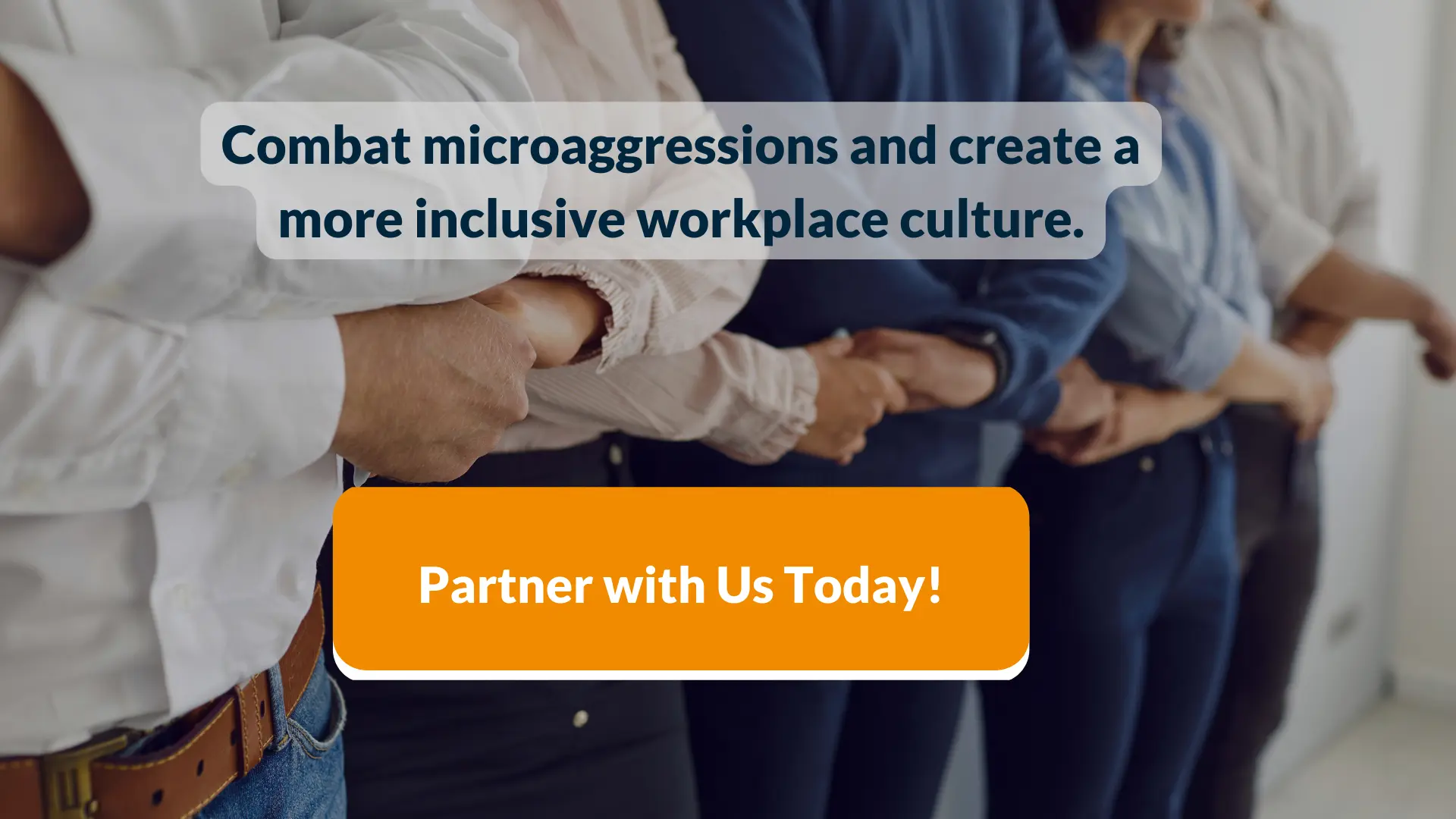"By rooting out the weeds of bias, we cultivate an environment where everyone can blossom and thrive."
Understanding Microaggressions: What Are They?
You know those little comments or actions that, often unintentionally, make someone feel uncomfortable or unwelcome? Those are called microaggressions.
They can be things like asking a person of color where they're "really" from, assuming that a woman must be in a lower position than she actually is, or making jokes about someone's age.
Even though they might seem small, these microaggressions can really add up over time. They can make people feel like they don't belong, like they're not valued, or even like they're not safe.
And that's not just bad for the person on the receiving end — it's bad for everyone. After all, who wants to work in a place where they don't feel respected or valued?
As a result, it is critical that everyone be aware of the influence their words and actions can have, and that they collaborate to create a workplace where everyone feels welcome and valued.
The Hidden Harm: Why Microaggressions Matter in the Workplace
Microaggressions might seem small, but they can have a big impact. These are those little comments or actions that, often unintentionally, send negative messages about someone's race, gender, age, sexual orientation, or other identity group.
It could be something as simple as assuming that a woman is in a lower position than she actually is, or asking a person of color where they're "really" from. While these might seem harmless on the surface, they can make people feel unwelcome, undervalued, and even threatened.
The thing about microaggressions is that they're often so subtle that people might not even realize they're doing it. But even though they're small, they can add up fast.
Repeated microaggressions can create a hostile work environment, and that's bad news for everyone. It can lead to lower morale, higher turnover, and less productivity. Plus, it's just not a very nice way to treat people.
So, even though they might seem minor, it's important to address microaggressions and ensure everyone feels welcome and respected at work.
Beyond Identity: Why No One is Immune to Microaggressions
How Microaggressions Create a Culture of Disinclusion
Prevention is Power: Proactive Steps to Combat Microaggressions
Beyond Training: The Continuous Journey to Eliminate Microaggressions
How Can Goodwin Recruiting Assist?
Addressing microaggressions in the workplace isn't just about being politically correct — it's about creating a better work environment for everyone. When people feel respected and included, they're happier and more productive. So, by tackling microaggressions head-on, we're not just making the workplace fairer; we're also boosting morale and getting the best out of our team.
Here's how our recruiting firm can assist your organization with microaggressions in the workplace:
- Building a Diverse Candidate Pool:
- Targeted Sourcing:
- Actively seeking candidates from diverse backgrounds involves partnering with organizations focused on underrepresented groups or attending job fairs that cater to a wider demographic.
- Inclusive Job Descriptions:
- Assisting you in writing job descriptions that avoid biased language and highlight your company's commitment to diversity and inclusion can attract candidates who value a respectful work environment.
- Targeted Sourcing:
- Promoting a Culture of Respect:
- Diversity Training:
- Training for your hiring managers and recruiters to focus on unconscious bias and microaggressions, helping them identify and avoid biased language and behaviors throughout the recruitment process.
- Standardized Interview Process:
- Implementing a standardized interview process with pre-determined questions helps mitigate bias during interviews and ensures all candidates are evaluated fairly.
- Diversity Training:
- Fostering Open Communication:
- Candidate Feedback:
- Encouraging candidates to provide feedback on their interview experience helps us identify potential microaggressions during the interview process and make improvements.
- Post-Placement Support:
- Offering ongoing support to new hires, including providing resources and channels for them to report any microaggressions they experience, ensures a supportive environment even after placement.
- Candidate Feedback:
Adopting these measures, can help your business create a more diverse and inclusive workplace in which microaggressions are less likely to occur and workers of all backgrounds feel appreciated and respected.
Ready to create a workplace where everyone feels respected, included, and valued? Let's work together to tackle microaggressions head-on and boost morale in your team!



































